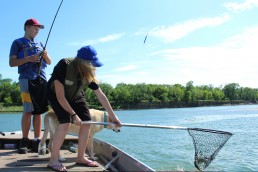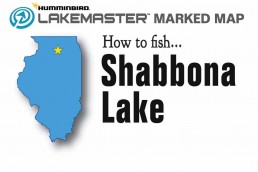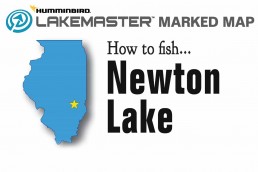Raising an Angler: Pick the right lake
SHARE THIS POST
Fish where the fish are
I love listening to conversations between my boys and adults. They get asked the same loaded question by every novice angler and even accomplished fisherman. “How do you catch so many fish?” Their response is an Al Lindner bit of wisdom: “You have to fish where the fish are”. A chuckle then ensues among the adults. It’s followed by, “Well, OK, if that’s all you’re going to tell, then you’re growing up to be a fisherman for sure.” What’s funny is, a lot of times it really is that simple. Pick the right lake, kids catch more fish. The boys are right, Al might just be on to something.
One of the goals of taking a kid or new angler fishing is to catch fish. Pick the right lake, with fish that fit the needs of the angler you are taking out that day. Putting a little time into picking the right water for your next outing usually determines whether it will be a fun trip.
How to pick the right lake
The top things to look for are kinds of water and kinds of fish. We’re not looking into specific species or particular destinations, yet. When I attempt to pick the right lake for a young angler, I look for a place that fits their ability level and attention span. At the same time, stretch them just a bit. Focusing on catching a particular species of fish greatly reduces the opportunities and fun that could be had on each trip.
First, take a stunted lake that is full of 4- to 8-inch panfish, 8- to 14-inch walleye or 12- to 24-inch pike. These lakes are great for young kids with shorter attention spans. You can catch countless fish one after another. This provides the opportunity for you to start teaching the hows and whys of catch and release. These lakes are usually everywhere, making them easy to get to.
Next are small ponds and lakes where fisheries departments put in nearly grown fish for anglers to easily take. You can generally catch nicer fish pretty consistently. This still provides the opportunity for kids to learn some more advanced skills. Having a little bit of everything–walleye, trout, cats, bass, panfish and more—these are great places for kids to learn basic concepts while being able to catch fish, even if they’re not doing it quite right.
Sometimes the right lake is a river!
Rivers are places that most people avoid because of the fear of snags and perceived difficulty. What rivers do provide are opportunities for young anglers to be surprised by every catch. You never know what you are going to pull out. Another plus to rivers is that they are full of barriers that congregate fish. Jetty- and dam-hopping up and down rivers provides an adventure—and fish. Another plus to river fish is that they are usually less affected by weather, but respond to current speed and water levels. This makes predicting where they will be and when they will be biting a bit easier. Because of this, rivers are a great back-up plan if the weather doesn’t cooperate for your lake adventure.
Big water, big advantages
Finally, big water. What’s nice about big water is that there is generally an abundance of published information on what is going on with fish location and how they are biting. Once you find fish, big water provides bigger-sized fish, although they can take more time and technical skill to catch. On good days, big water is good for any angler. But on average or slow days, it’s better suited for kids with patience and more technical skills.
Big water also offers another big advantage: options. Some of my most enjoyable fishing memories are of getting into big schools of hungry gold eyes, drum, white bass and catfish with kids. It’s like fishing in a stunted lake, but with a 1- to 2-pound average. Not only is it fun; it’s the day that will be talked about for a lifetime.
Access granted?
Access will rule the day. If you pick the right lake, but can’t get to the fish, you picked the wrong body of water. Now, I’m not just talking about the lake with lots of cabins and a single fishing pier. Access means access to the fish when you are there, and more importantly, to the young angler you are take out that day. A small pond with 30 yards of weeds around the edge while shore fishing puts a damper on the success for that outing.
So, when choosing a body of water, look at all the access factors: shore fishing or boat fishing, boat size, tackle on hand, experience and fish location. Now this may sound harder than it is. Take a look at what you have and know, and then pick a lake that fits and has access to the fish that day.
Are you enjoying this post?
You can be among the first to get the latest info on where to go, what to use and how to use it!
Pick the right time and pick the right lake
Timing is more important than most people think. I can’t count the number of times I have heard someone say, “Well, we caught fish there last month.” Fish follow food and instincts. If you fish in the same place all the time, you will have some good days and more bad days fishing. This is because you don’t have access to the fish where you are at, when you’re there. When picking a body of water and a place on that body of water, you need to look at the fish movements and behavior.
A family tradition is shore fishing a local big body of water in the fall during pheasant season. The walleye and smallies are up close to shore and we can spend the night relaxing around the fire while catching limits of fish. Fish the same place all summer, however, and you will catch almost nothing.
Spring and fall are generally good times to cast spinners and spoons on trout ponds, but in the heat of the summer, trout dough is the only way to go in the same place. Don’t worry—you don’t need to figure all this out on your own; there is lots of help out there. You just need to ask.
Where to go for more info
There are a ton of resources for every angler picking out the right body of water. Contrary to popular belief, the pros are using the same resources you have access to. There aren’t too many secrets out there; you just need to know where to look.
First of all, look at your state DNR Game and Fish website. Most states have interactive maps that cover many variables. Take this information, mix it with the mapping from companies like Navionics, and you can pick the right lake for your next trip.
Next, ask around with the people you know. You will always find the guy who is tight-lipped about everything, but any outdoorsman worth anything will help you find a good place to take new anglers to catch fish. This includes the pros in your area. Personal message them and ask for recommendations and ideas. It is their job to help people catch fish, so don’t be afraid to ask. Now this comes with a warning: Don’t ask about taking kids out and use that information for any other purpose—like for your own benefit.
Finally, go to a small local bait shop and buy your bait, a snack and some gas. Yes, it may be more expensive than the box store down the road, but you are there for more than just bait and tackle. You are there for information and to talk to someone who cares about you and your trip. Don’t forget to say thank you for the information you get. One of the best ways is with a picture of the catch of the day. Size and numbers don’t matter; kids with smiles and fish do. So say thanks, and send a picture to those that help you out.
It’s all about the next generation
Remember, the goal is that your young angler has a positive outdoor experience on every trip. By taking some time to pick a body of water that matches the angler, you can fish where the fish are and have an adventure that will be talked about for a lifetime.
Geremy Olson is an avid outdoorsman, producer & public speaker, 241ink.org, whose son Peter also writes a monthly feature for MidWest Outdoors.
MWO
SHARE THIS POST
Did you enjoy this post?
You can be among the first to get the latest info on where to go, what to use and how to use it!
MWO
We believe being outdoors is good. With more than 1,000 articles each year, MidWest Outdoors magazine is all about sharing outdoor experiences with you—where to go, what to use and how to use it… whether you’re close to home or on that trip of a lifetime.



